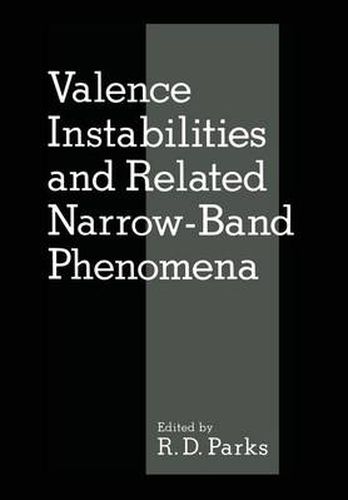Readings Newsletter
Become a Readings Member to make your shopping experience even easier.
Sign in or sign up for free!
You’re not far away from qualifying for FREE standard shipping within Australia
You’ve qualified for FREE standard shipping within Australia
The cart is loading…






This title is printed to order. This book may have been self-published. If so, we cannot guarantee the quality of the content. In the main most books will have gone through the editing process however some may not. We therefore suggest that you be aware of this before ordering this book. If in doubt check either the author or publisher’s details as we are unable to accept any returns unless they are faulty. Please contact us if you have any questions.
Those well-intending workers, especially theorists, who have viewed hungrily the mixed valence problem, but have not yet made the bold leap, might be comforted to learn that the Rochester conference left the virginal state of that problem essentially intact. That is not to say that the event was prosaic. Indeed, the conferees exhibited a level of effervescence appropriate to the freshness and challenge of the problem at hand. If the meeting failed to solve major questions, it at least established several guidelines. One is that future experimental efforts, at least on a short time scale, might be spent most profitably on those substances which exhibit consistent, and hence probably intrinsic, behavior from laboratory to laboratory. A recurring message, not always subtle, to the*theorists was that piecemeal approaches to the mixed valence problem, characteristic of much of the work to date, are of limited usefulness. For at the core of the problem one has a melange of boot-strapping interac tions which must be sorted out and dealt with properly. Para phrasing Phil Anderson (see Epilogue), the mixed valence problem is in the same category of problems which are failing to be done in field theory these days.
$9.00 standard shipping within Australia
FREE standard shipping within Australia for orders over $100.00
Express & International shipping calculated at checkout
This title is printed to order. This book may have been self-published. If so, we cannot guarantee the quality of the content. In the main most books will have gone through the editing process however some may not. We therefore suggest that you be aware of this before ordering this book. If in doubt check either the author or publisher’s details as we are unable to accept any returns unless they are faulty. Please contact us if you have any questions.
Those well-intending workers, especially theorists, who have viewed hungrily the mixed valence problem, but have not yet made the bold leap, might be comforted to learn that the Rochester conference left the virginal state of that problem essentially intact. That is not to say that the event was prosaic. Indeed, the conferees exhibited a level of effervescence appropriate to the freshness and challenge of the problem at hand. If the meeting failed to solve major questions, it at least established several guidelines. One is that future experimental efforts, at least on a short time scale, might be spent most profitably on those substances which exhibit consistent, and hence probably intrinsic, behavior from laboratory to laboratory. A recurring message, not always subtle, to the*theorists was that piecemeal approaches to the mixed valence problem, characteristic of much of the work to date, are of limited usefulness. For at the core of the problem one has a melange of boot-strapping interac tions which must be sorted out and dealt with properly. Para phrasing Phil Anderson (see Epilogue), the mixed valence problem is in the same category of problems which are failing to be done in field theory these days.